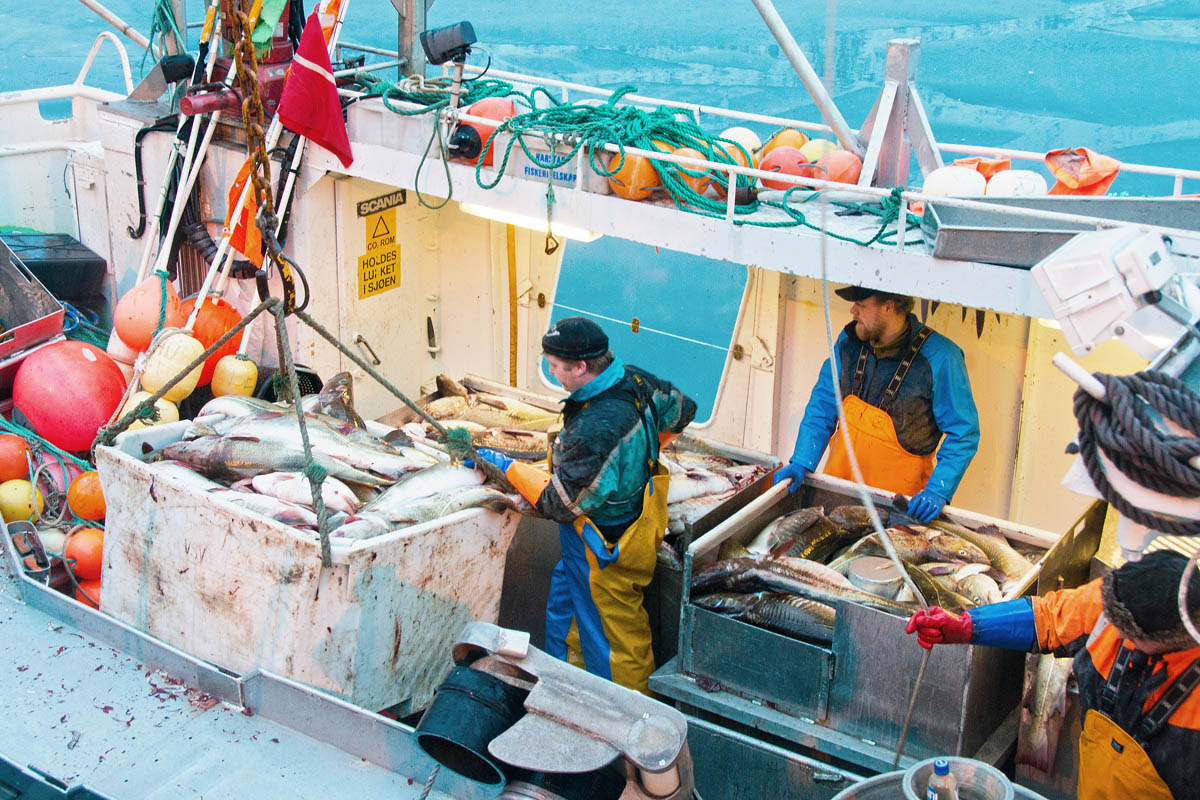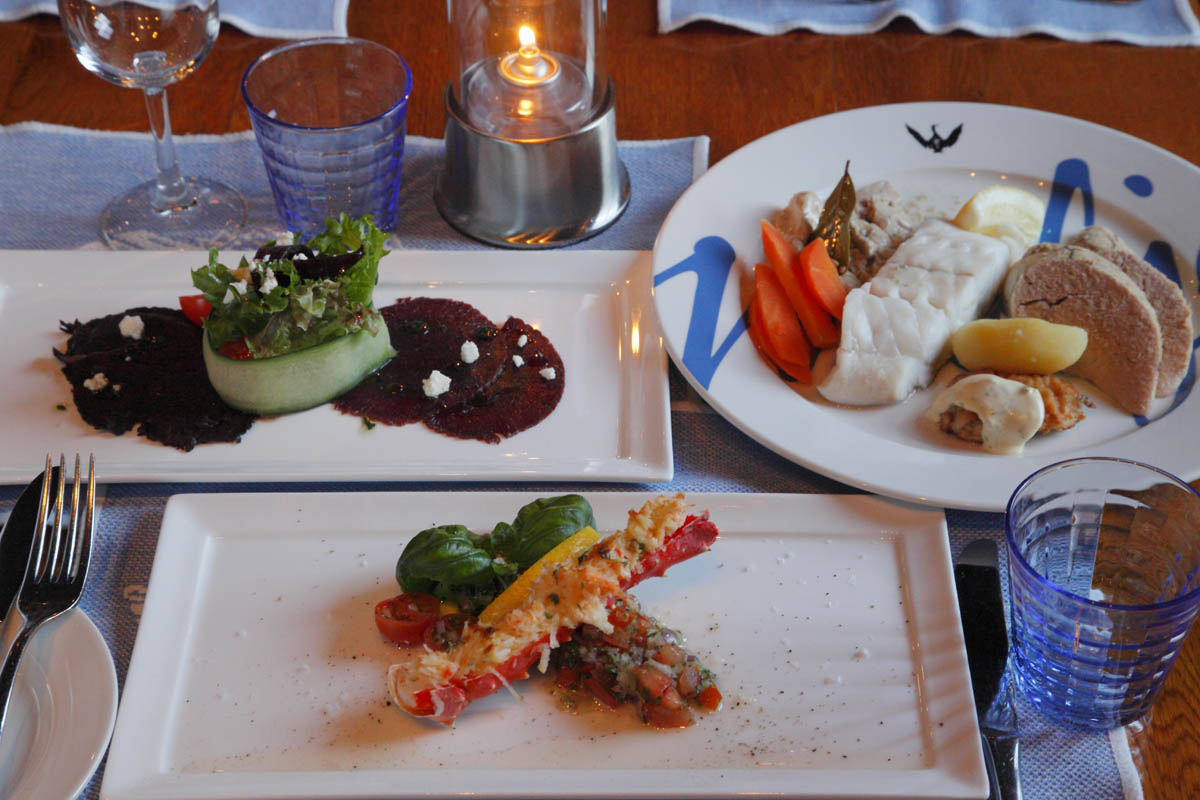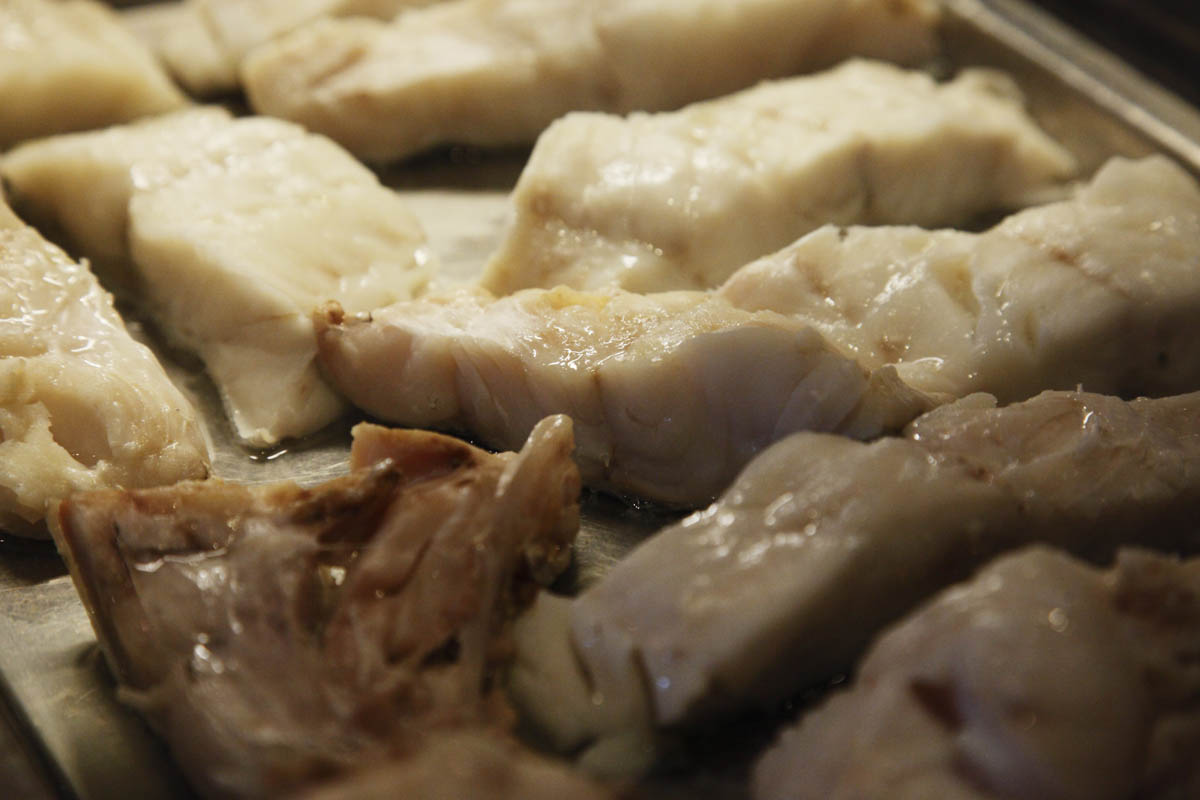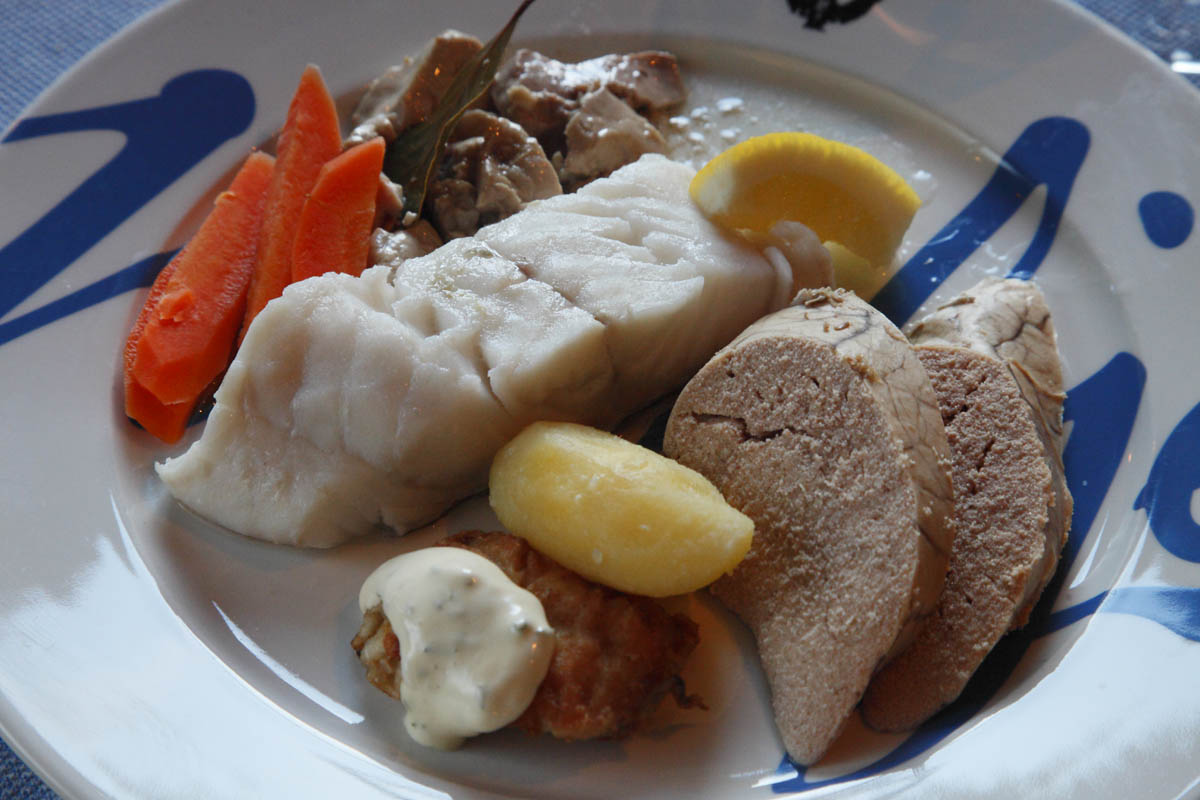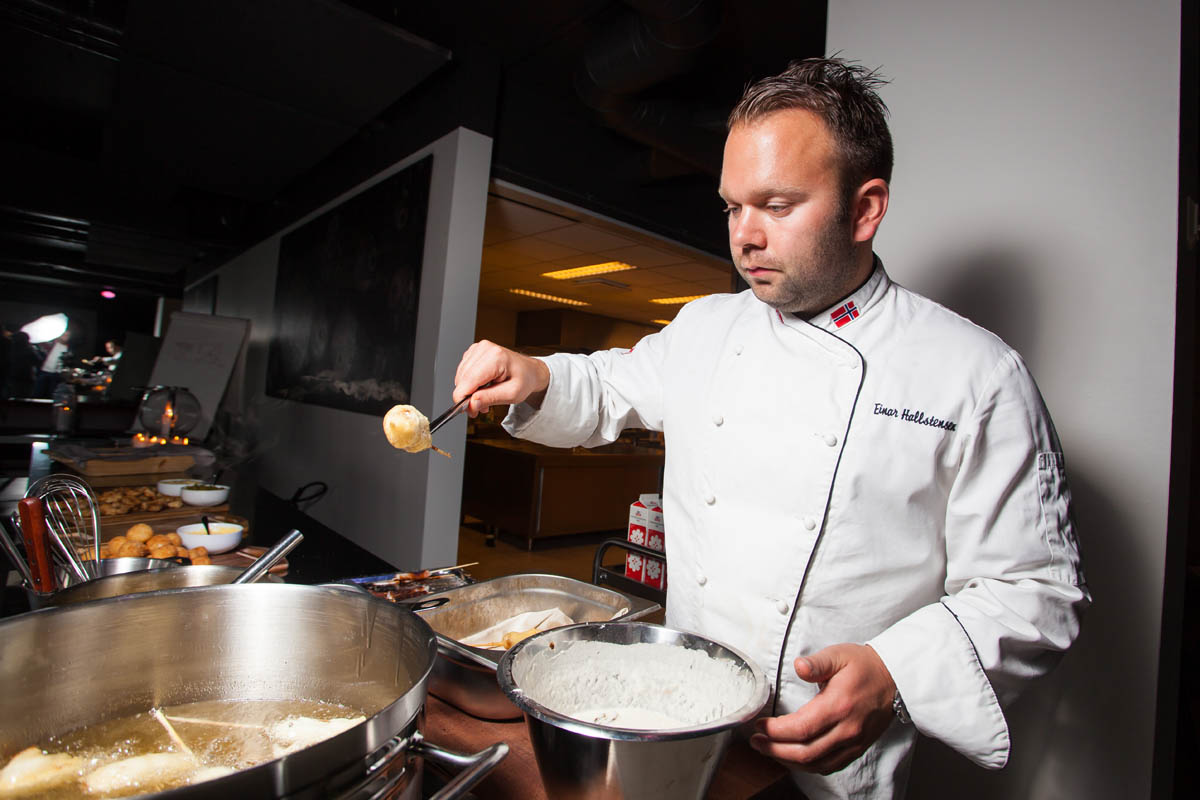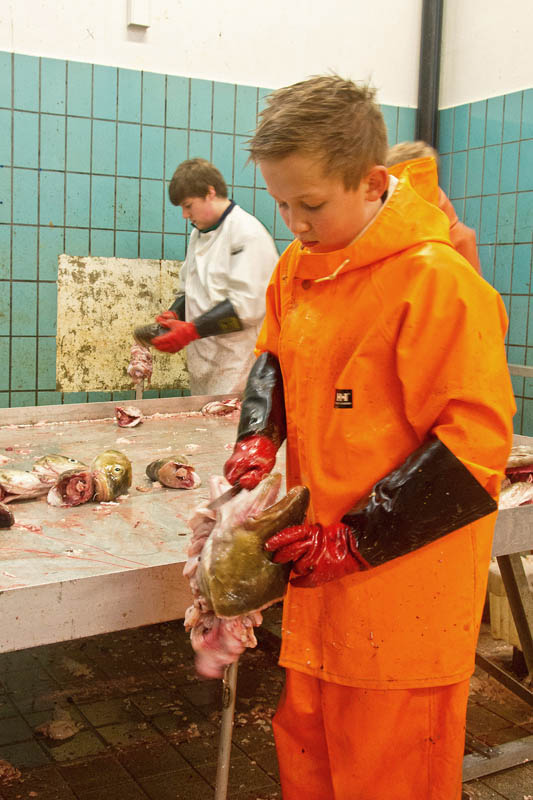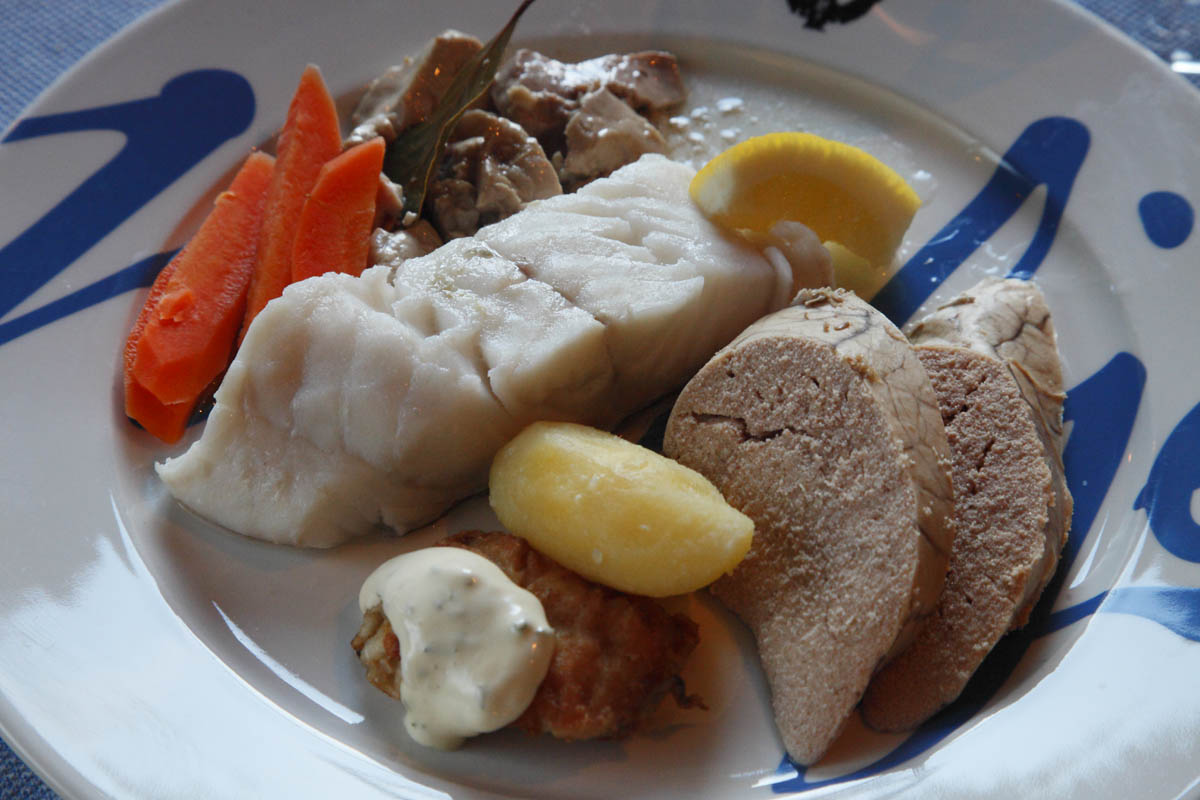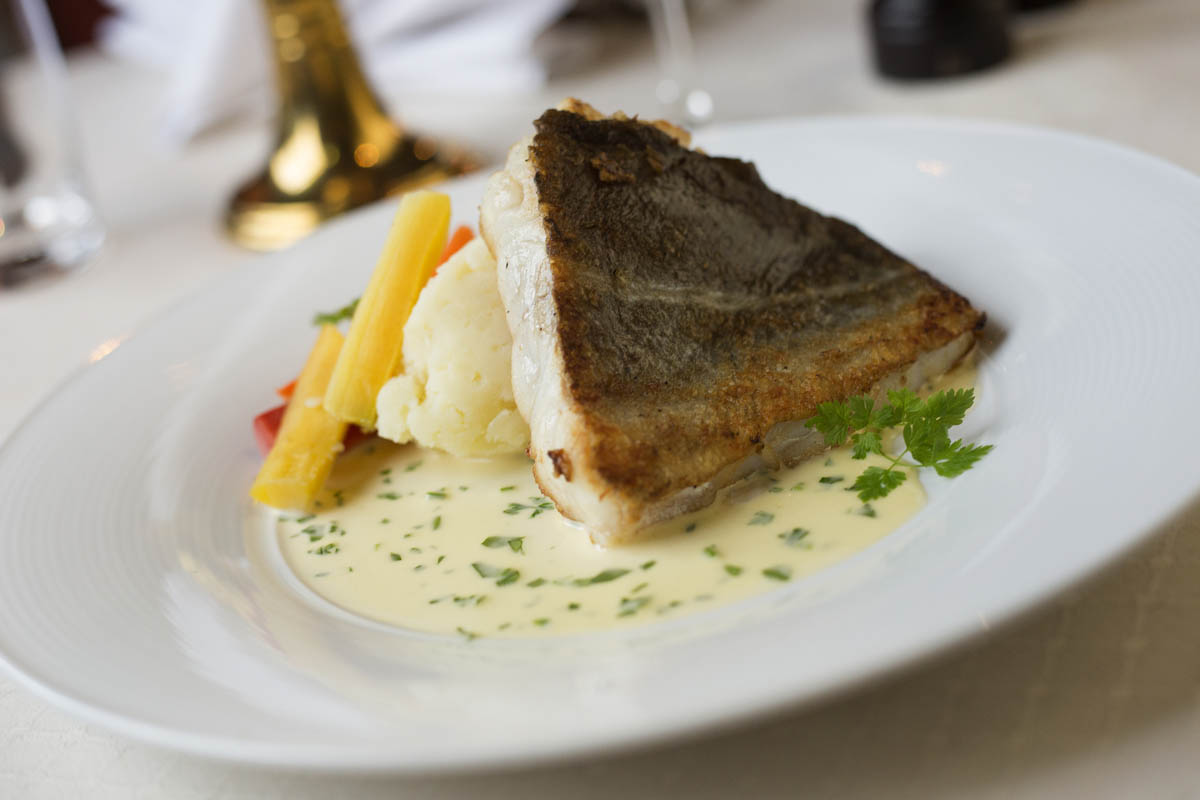Mølje is a dish of cod, cod liver and cod roe, and is extremely popular in Northern Norway during the winter months.
The annual migrations of the Northeast Arctic cod from the Barents Sea provide the main ingredients for mølje. The cod that feeds in the rich seas at the edge of the ice needs slightly milder waters in which to spawn, and the archipelago of Lofoten, jutting far out from the mainland, sits ideally in the path of the Gulf Stream. This means that when the cod are ready to spawn, they head straight for Lofoten, full of eggs, and from January until 14 April, they provide a rich catch for this thousand year old fishery.
It is a favourite dish among the fisherman
In times gone by, the Lofoten fishermen had only one cooking pan and one fireplace. They would sleep outside, overturning their boat and sheltering beneath it. Later they moved into rorbu cabins, which often had an oven but space for only one saucepan at a time. They would put the cod roe and potatoes into the bottom of the saucepan and cover them with water. When they were almost cooked, they would add the liver and cod, and simmer these for a few more minutes. Finally, they would pour it all out and mix it all up into a ‘mess’ or mølje.
Modern Mølje is a little more complicated to make
These days we cook mølje in four saucepans. The roe takes the longest to cook, simmering below boiling point for up to an hour, depending on how big it is. Potatoes, either almond potatoes or gulløye potatoes, are cooked separately. The liver is brought to the boil and then plunged into cold water to help release the oil. The process is repeated three times, and finally a sour ingredient is added. In former times this would probably have been buttermilk, the thin, sour liquid left over after cheesemaking, but these days it tends to be vinegar or lemon. The liver is also seasoned with salt, peppercorns and perhaps a bay leaf. The cod is simmered in boiled water until it changes colour, which only takes a few minutes. Traditionally, the cod should be cut into chops, but in the modern restaurant world, it now tends to be sliced into fillets, to avoid the dreaded fish bones.
Mølje can also be found in restaurants when in season
Stian Haugnes, head chef of “Bojer” in Svolvær, born and bred in Henningsvær, serves mølje in season. He says that from the end of January until mid-March is the best time to eat mølje, since that is when the consistency of the roe is at its best. It becomes grainy and coarse towards the end of March. “Mølje is not mølje without the roe, it’s just cod and liver”, before hastening to add “which is also very good, of course”. Locals in Svolvær are the biggest fans of mølje, but tourists from further south in Norway have also learned to appreciate this delicacy. For foreigners, mølje can come as a bit of a shock, but most people become converts, because the fish is so fresh and well prepared. “Not everyone loves the liver, but at least they can say they tried it”, says Stian.
Mølje is a self contained meal
Ingebjørg Moe of the Norwegian Seafood Council emphasises that mølje is a complete meal. “If you add a few potatoes and carrots, it gives you everything you need”, she says. The cod liver contains high levels of valuable omega-3 fatty acids and is bursting with vitamin D. North of the Arctic Circle there is not much sun in winter so the vitamin D is very welcome. The cod meat also contains many valuable proteins and minerals such as selenium and iodine.
Mølje is not the only seafood treat available
Many other delicacies also come out of the mølje season. Cod tongues are cut out by boys in the fishing villages and are delicious breaded and fried in butter until crisp. This is also a great way of cooking cod cheeks. Kamsemager are cod stomachs that are stuffed with liver and boiled for fifteen minutes. Not long ago, you could only find these traditional dishes in homes along the coast, but now they are becoming increasingly popular in restaurants. They are also available from the mobile fish sellers whose vans you can see in the town centres and outside shopping centres in Northern Norway during the mølje season.
